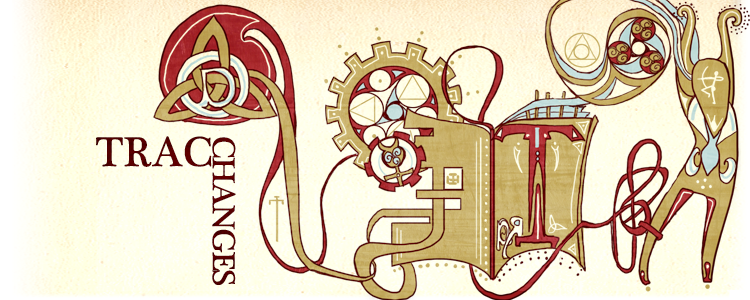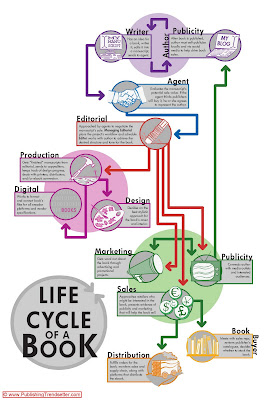With the holidays quickly approaching, this past week I’ve found myself spending a lot of time reflecting on the past year—and with it, the past year’s books. While as a book marketer I’m already looking at books that are a year or more from publication (we just launched the Winter 2013 list—yeesh!), as a reader I find myself looking back as often as I look forward. If you asked me what my favorite reads this year were, you’d find my list reflects that; it’s pretty evenly split between books I loved from 2011, books I discovered my love for in 2011 (though they came out years ago), and books I was lucky to read in advance and can’t wait to buy in hardcover come 2012.
Books I Read Early—and Can’t Wait Until 2012 to Read Again

---> Born Wicked by Jessica Spotswood
Though I enjoy many books each year, it’s a rare book that I truly love. So when my roommate Victoria thrust this book into my hands, I think she and I both saw it as a chance to test whether our tastes aligned and we could trust each other to recommend books. The answer is yes. In Born Wicked, Jessica has built a compelling, convincing world that feels at once familiar and completely foreign, both reserved and darkly dangerous. The climax delivered such a skillful series of blows, twists, and reveals that I found myself breathless and begging for more when I hit the last page.
I picked Scarlet up for the butt-kicking female protagonist—and there’s plenty of that—but I stayed for the love story. This book breathes new life into the Robin Hood story with characters that ring utterly true both as heroes and as conflicted, broken teenagers. The fast action and the book's many surprises kept me breathlessly turning pages. What’s more, amidst this wave of paranormal and contemporary romances, it was refreshing to read a love story that didn’t dominate the plot but nonetheless felt essential to it, and very, very right.

---> Butter by Erin Lange
Butter is the story of an overweight teenager who, friendless, teased, and out of hope, threatens to eat himself to death live on the internet on New Year’s Eve. When his announcement skyrockets through the rumor mill, he’s suddenly noticed—even liked—by his classmates, and he finds himself wondering if he can really go through with the plan—and if he has a choice in the matter. This book had me at its oh-so-heartbreaking premise, and it absolutely delivered. Erin doesn’t shy away from showing teenagers at their most brutal, but she nonetheless tells a story that is ultimately about redemption.

---> Throne of Glass by Sarah Maas
More butt-kicking! Celaena Sardothien is plucked from certain death in the slave mines of Endovier and whisked away to a glass castle to compete for the title of King’s assassin. All that stands between Celaena and the promise of freedom is a deadly competition, a chamber far below the castle that's full of dark secrets, and a host of traitors who make it impossible for Celaena to trust anyone—even the two men closest to her. A jaw-dropping cross between The Hunger Games and Game of Thrones, this book refused to let me put it down until I’d raced to the end. (Also, that art is fan art! So cool!)
Favorites of 2011
---> Daughter of Smoke and Bone by Laini Taylor
I never fail to be spellbound by Laini’s lyrical writing and her oh-so-literary approach to storytelling. She took a commercial concept—an angel falls in love with a demon, and it does not go well—and surprised me with her execution. On a structural level, Daughter of Smoke and Bone is like almost no other YA I’ve read. And yet, even when the story’s pace was leisurely, I was completely and utterly captivated.

---> The Near Witch by Victoria Schwab
The Near Witch is Victoria’s first novel, a lovely tale of intrigue, magic, and a dash of love. Again, it was Victoria’s literary style that pulled me into this one, and I can’t stop talking about her characters—including her setting, a moor that becomes a character in its own right under Victoria’s skillful hand.---> Delusions of Gender by Cordelia Fine
From a neurologist’s lens, Cordelia debunks the myths we’ve all heard about the genetic roots of gender, and builds a compelling argument for viewing gender as a social construct. I learned an immense amount from this impeccably-researched book.
---> Season of Secrets by Sally Nicholls
In this literary middle-grade novel, a young girl grieving her mother’s death meets a mysterious man who can make flowers bloom and create roots, seed, and flower out of nothing. But if he can breathe life into a plant even in the dead of winter, can he bring back Molly’s mother? Season of Secrets is one of those rare gems that broke my heart entirely, and then stitched it back up again in the course of 250 pages.
And I Just Had to Mention…
---> Graceling and Fire by Kristin Cashore
Kristin’s characters! Oh, heavens, her characters. Katsa, Po, Fire, and Briggan are among the most complex characters I’ve ever encountered in fiction, and the emotional truths at the heart of both of these epic-fantasy-meets-love-stories are so well-observed and maturely handled that I have a hard time believing Graceling was a debut. Had the battles, chases, fights, and escapes of these novels not even existed, I’d still be singing their praises as finely wrought character studies. But married with plot, those characters make Kristin’s books some of the best I’ve ever read. I can't wait for Bitterblue!
How about you? What were your favorite reads of 2011? What are you waiting on in 2012?





















































